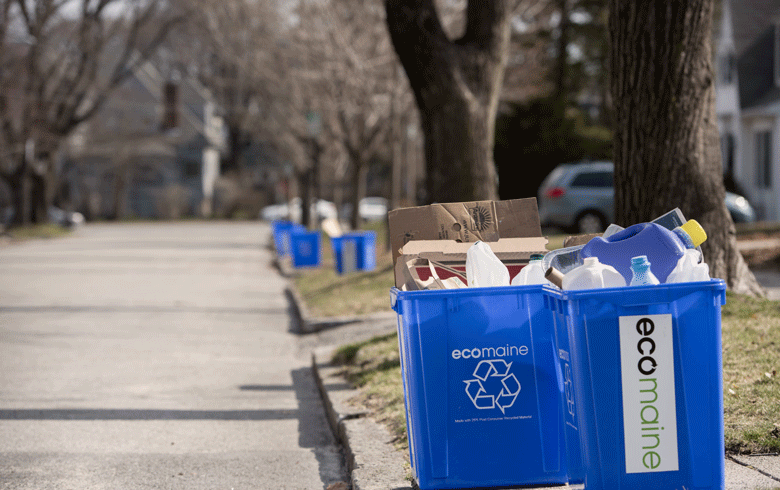More than 30 years ago, Maine set out to recycle or compost 50 percent of our waste annually. Today, we’re not even close to achieving that goal. We’re going backwards, according to a new report from the Maine Department of Environmental Protection. Just under 38 percent of our waste was recycled in 2019.
The state must find ways to boost recycling. Our leaders can start by assigning the producers of plastic, glass, and other packaging responsibility for funding and maintaining a new recycling infrastructure that would enable Maine to process its waste independently.
Recycling has grown harder in Maine—and across the country—because the market for our trash has dried up. For decades, we exported most of our recyclables to China. But in 2018, China stopped accepting our refuse. Municipalities suddenly had few places to send their recyclables.
Those fees would seed a government-chartered non-profit packaging stewardship organization…
A limited supply of domestic processing facilities, combined with huge demand for their capacity, led to higher prices. Disposing of recyclables now costs almost twice as much as disposing of trash. That’s led many cities—including Eddington, Orrington, and Holden—to end their curbside recycling programs.
People like recycling. Three-quarters of Mainers believe all packaging should be recyclable, no matter the cost. Two-thirds support building the infrastructure needed to increase the amount of plastic that can be recycled.
A packaging stewardship program can address these issues. It tasks the producers of packaging—like retailers that supply containers or restaurants that wrap up sandwiches—with developing a comprehensive recycling system to handle Maine’s trash in state.
Here’s how that program would work. Packaging producers would charge a small fee for each piece of packaging used. Those fees would seed a government-chartered non-profit packaging stewardship organization to oversee the new state recycling infrastructure.
This system appropriately aligns incentives to maximize the amount we recycle and minimizes cost. It’s in packaging producers’ financial interests to choose materials that are easy to recycle because they’re responsible for funding the infrastructure.
Some state officials want to put this packaging stewardship organization under the auspices of the Maine Department of Environmental Protection. But that’s unwise. The agency has plenty of other responsibilities and so would not be able to give this recycling effort the attention it needs.
It’s also important to keep the funding stream for packaging stewardship off the state’s balance sheet. State officials may be tempted down the line to tap that funding for other purposes. That could jeopardize the effectiveness of this recycling effort.
Fortunately, other Maine lawmakers are working on legislation, S.P. 474, that would implement a packaging stewardship program the right way.
Eight in ten Mainers believe companies should bear responsibility for protecting the environment. And nearly three-quarters of people in our state believe we need a coordinated policy to govern how we dispose of packaging.
The legislature can respond to those calls by creating a packaging stewardship program. In so doing, our leaders could put Maine on the path to meeting our 30-year-old recycling goals.
Jon Southern is executive director of the Downeast Coastal Conservancy, a land trust committed to conserving natural habitats and resources of the coastal watersheds, islands, and communities of Washington County.





